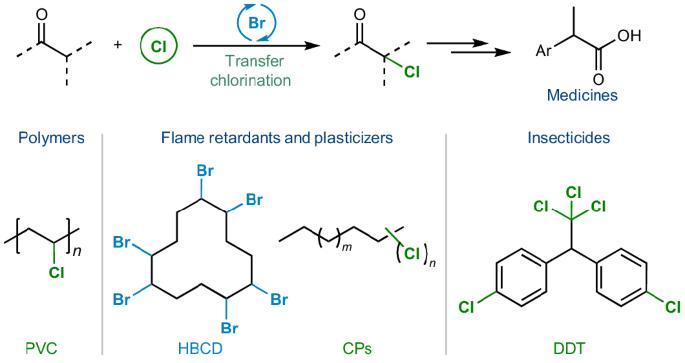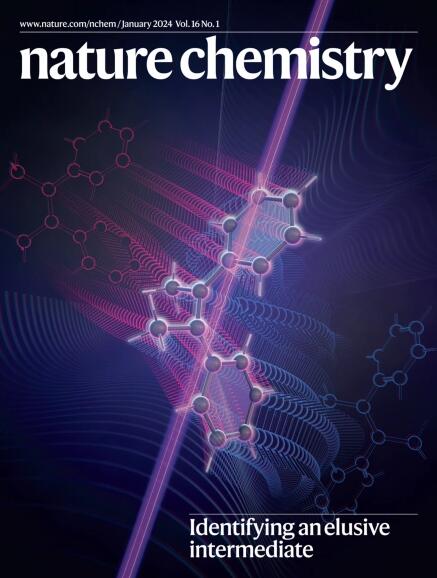通过烷基溴催化的转移氯化法实现卤代有机污染物的再利用
IF 19.2
1区 化学
Q1 CHEMISTRY, MULTIDISCIPLINARY
引用次数: 0
摘要
卤代有机污染物(HOPs)具有高毒性、持久性和生物蓄积性,正在引发严重的环境和人类健康危机。必须采取紧急行动,制定减少和再利用 HOPs 的有效方法。目前的策略主要侧重于 HOPs 的降解,而将其重新用于用途则是另一种方法,尽管这是一项具有挑战性的任务。在这里,我们发现烷基溴可以作为催化剂,利用烷基氯作为氯源进行氯的转移。我们证明了这种方法具有广泛的底物范围,并成功地将其应用于包括二氯二苯基三氯乙烷、六溴环十二烷、氯化石蜡、氯甲基聚苯乙烯和聚氯乙烯(PVC)在内的 HOPs 的再利用。此外,我们还证明了使用聚氯乙烯和六溴环十二烷可以合成基本的非甾体抗炎药物,并证明了聚氯乙烯废料可直接用作氯化剂。总之,这种方法为 HOPs 的再利用提供了一种前景广阔的策略。本文章由计算机程序翻译,如有差异,请以英文原文为准。


Repurposing of halogenated organic pollutants via alkyl bromide-catalysed transfer chlorination
Halogenated organic pollutants (HOPs) are causing a significant environmental and human health crisis due to their high levels of toxicity, persistence and bioaccumulation. Urgent action is required to develop effective approaches for the reduction and reuse of HOPs. Whereas current strategies focus primarily on the degradation of HOPs, repurposing them is an alternative approach, albeit a challenging task. Here we discover that alkyl bromide can act as a catalyst for the transfer of chlorine using alkyl chloride as the chlorine source. We demonstrate that this approach has a wide substrate scope, and we successfully apply it to reuse HOPs that include dichlorodiphenyltrichloroethane, hexabromocyclododecane, chlorinated paraffins, chloromethyl polystyrene and poly(vinyl chloride) (PVC). Moreover, we show that the synthesis of essential non-steroidal anti-inflammatory drugs can be achieved using PVC and hexabromocyclododecane, and we demonstrate that PVC waste can be used directly as a chlorinating agent. Overall, this methodology offers a promising strategy for repurposing HOPs. The presence of halogens in halogenated organic pollutants has negative impacts on the environment; however, they serve as valuable sources for halogenation reactions. Now it has been shown that transfer chlorination reactions enable the repurposing of halogenated organic pollutants for the synthesis of chlorides and bromides.
求助全文
通过发布文献求助,成功后即可免费获取论文全文。
去求助
来源期刊

Nature chemistry
化学-化学综合
CiteScore
29.60
自引率
1.40%
发文量
226
审稿时长
1.7 months
期刊介绍:
Nature Chemistry is a monthly journal that publishes groundbreaking and significant research in all areas of chemistry. It covers traditional subjects such as analytical, inorganic, organic, and physical chemistry, as well as a wide range of other topics including catalysis, computational and theoretical chemistry, and environmental chemistry.
The journal also features interdisciplinary research at the interface of chemistry with biology, materials science, nanotechnology, and physics. Manuscripts detailing such multidisciplinary work are encouraged, as long as the central theme pertains to chemistry.
Aside from primary research, Nature Chemistry publishes review articles, news and views, research highlights from other journals, commentaries, book reviews, correspondence, and analysis of the broader chemical landscape. It also addresses crucial issues related to education, funding, policy, intellectual property, and the societal impact of chemistry.
Nature Chemistry is dedicated to ensuring the highest standards of original research through a fair and rigorous review process. It offers authors maximum visibility for their papers, access to a broad readership, exceptional copy editing and production standards, rapid publication, and independence from academic societies and other vested interests.
Overall, Nature Chemistry aims to be the authoritative voice of the global chemical community.
 求助内容:
求助内容: 应助结果提醒方式:
应助结果提醒方式:


